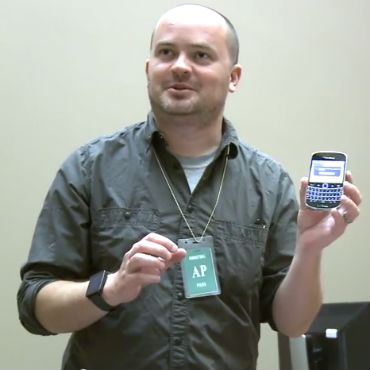Mikey Dickerson on failures and fixes

The head of the U.S. Digital Service found that the joys of public service can overcome even sleep deprivation.

Mikey Dickerson said the technical challenges of fixing HealthCare.gov were "simple problems with simple solutions."
Mikey Dickerson, now head of the U.S. Digital Service, says he had hallucinations generated by overwork as he toiled with a team called in to fix the ailing HealthCare.gov website.
That was perhaps the most startling revelation provided during Dickerson's talk at the 2015 SXSW festival in Austin last week, which the Office of Management and Budget posted online March 26.
The presentation frankly lays out some of the IT issues Dickerson faced in repairing HealthCare.gov, as well as his move from the private sector into public service.
Dickerson and Jen Pahlka, former deputy U.S. CTO and founder of Code for America, gave a March 16 talk at the festival on "How Government Fails and How You Can Fix It."
Dickerson, still working for Google at the time, said his acquaintance with the growing problems at HealthCare.gov began in October 2013, when he was visiting friends in Chicago. After hearing the White House was looking for experts to help with the site, he dialed into a 5:30 am conference call with the White House. "On the phone was a guy named Todd Park. I had never met Todd; I looked him up on Wikipedia while on the phone. With a couple more phone calls, I was talked into flying to Washington, D.C., for a few days to evaluate the situation."
On the ground, he said he found "some really surprising things" when he looked at the website's back office.
"One was that there was no monitoring of the production system. For those of you that run large distributed systems, you will understand that this is as if you are driving a bus with the windshield covered," he said. "Second was that there were hundreds of people and dozens of companies involved, but nobody in charge. Third was that there was no particular urgency about the situation. As I would come to understand, nobody was acting like there was anything out of the ordinary because there was nothing out of the ordinary."
He wasn't happy with the status quo that produced the site either. "The whole system had worked as normal and produced the expected result, which was a website that was overpriced by hundreds of millions of dollars and did not work, at all," he said.
With the numerous basic problems, he told the White House he could fix it well enough to enroll four million people, but would have to stay on to follow through. "My three-day trip had turned into a nearly three-month stint," he said.
Dickerson said his invoice for the nine-week period from October to Dec. 31 showed he worked an average of 17.5 hours per day.
"I was hallucinating and having other problems from not having slept enough for three months. This was the hardest thing I have ever done and I hope nothing ever comes close to it again," he said.
However, Dickerson said, the work he did wasn't really technically difficult.
"There were simple problems with simple solutions. The solution to the lack of monitoring was to install monitoring," he said. "The solution to nobody being in charge was to make everybody come to the same room where we could coordinate. And so on. It was not a hard engineering problem, and any of you could have done it, and it was also more important and meaningful than anything I could have accomplished in a lifetime working at my old job," he told the tech-savvy audience at SXSW.
After the work on HealthCare.gov wound down, Park was on the phone to Dickerson again, asking him to come work for the fledgling U.S. Digital Service.
Despite the hard work, he said he came away with a higher sense of purpose that made his role in the private sector pale by comparison.
"So I went back to my old job and tried to care about it. I was not successful," he said.
It took a few months, he said, but Park convinced him to come back to Washington to work for the government.
Once there, Dickerson said, he was astounded by the response from people wanting to get into the Digital Service. He said he received more than a thousand applications for the 10 positions at the new organization. "The demand from the agencies is also more than we could ever satisfy. We have met with 22 of them and identified around 60 projects that need attention."
He said there is an overwhelming need for engineers in the federal government, especially as the Digital Services idea spreads across agencies.
"The artificial barrier that has kept the technology industry and the public sector separated on different evolutionary paths is porous right now, and if enough people cross over, it can be destroyed," he said.
NEXT STORY: Gerry Connolly: FITARA's force multiplier


